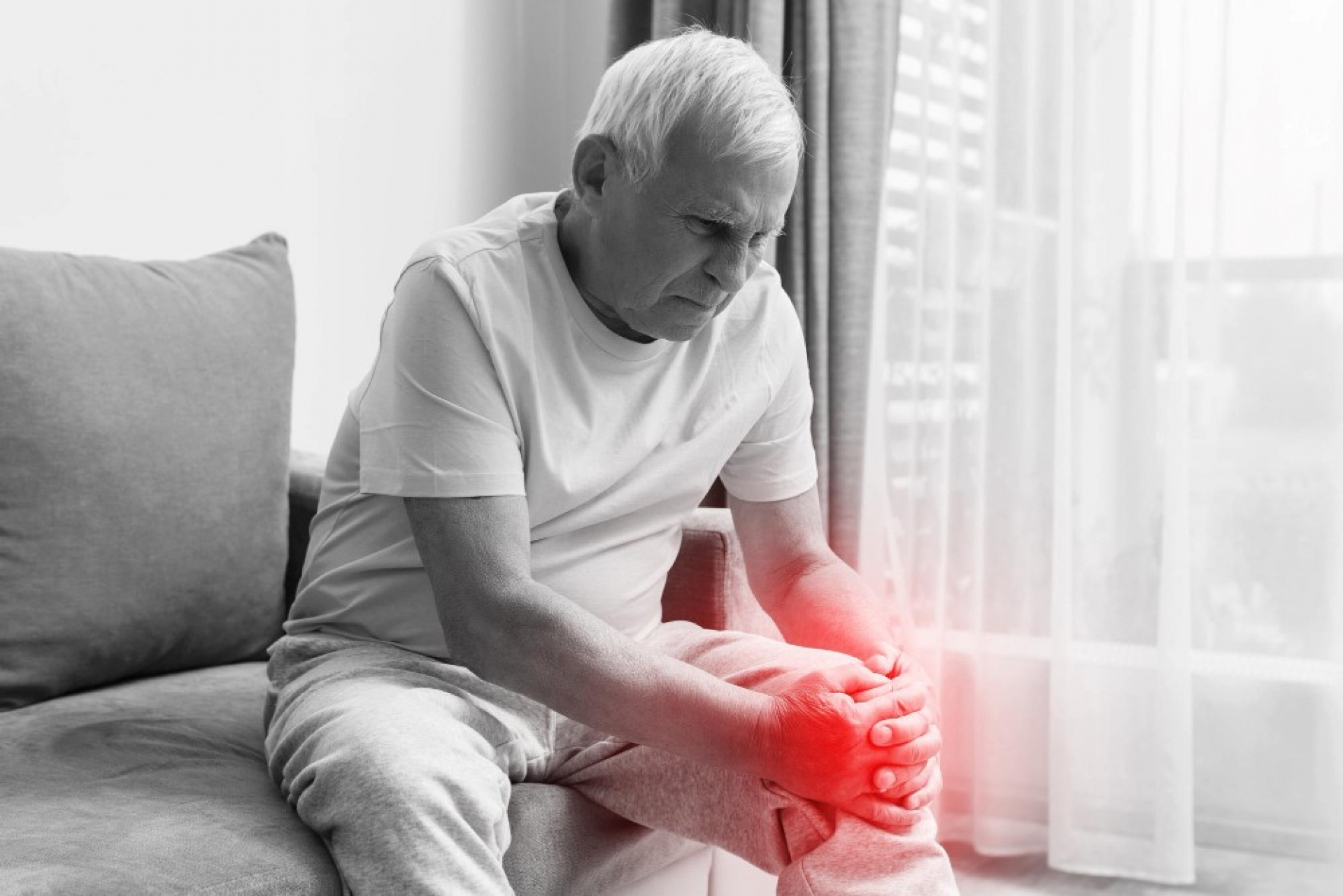When you hear “arthritis,” you might think of occasional aches or joint stiffness, but arthritis is far more complex. It is not a single condition, but a collection of over 100 disorders affecting joints, muscles, and surrounding tissues. Understanding the different types of arthritis is essential to proper diagnosis, targeted treatment, and long-term joint health.
This blog unpacks the real differences between the major types of arthritis, such as osteoarthritis, rheumatoid arthritis, psoriatic arthritis, and gout.
What Is Arthritis, Really?
Arthritis is a broad term that refers to joint inflammation, but not all forms of arthritis are created equal. They vary in:
- Underlying cause (wear and tear vs immune attack)
- Affected age groups
- Speed of onset
- Pattern of joint involvement
- Response to treatment
This makes accurate arthritis classification crucial.
How Is Arthritis Diagnosed? Understanding the Role of the Arthritis Test
Before diving into the types, let us talk diagnostics. An arthritis test is not a single exam but a panel of tests that may include:
- Blood tests:
- Erythrocyte Sedimentation Rate (ESR)
- C-Reactive Protein (CRP), Quantitative
- Rheumatoid Factor (RA)
- Anti Cyclic Citrullinated Peptide (CCP)
- ANA by Immunoblot, ANA IFA reflex to ANA Immunoblot, ANA IFA, in dilutions
- Rheumatoid Arthritis Panel, Basic
- Rheumatoid Arthritis Panel, Comprehensive
- Arthritis Profile
- Imaging: X-ray, MRI, or ultrasound to detect joint damage, inflammation, or fluid accumulation
- Joint fluid analysis: Helps identify gout, septic arthritis, or inflammatory changes
These tools help differentiate between inflammatory arthritis (like RA or psoriatic arthritis) and degenerative joint disease (like osteoarthritis).
Types of Arthritis You Should Know
Let us break down the most common and clinically significant types of arthritis, focusing on what sets them apart.
1. Osteoarthritis (OA): The Wear-and-Tear Arthritis
What is it?
Osteoarthritis is the most common form of arthritis and a leading cause of disability worldwide. It occurs when the cartilage that cushions the ends of bones wears down over time.
Causes:
- Aging
- Repetitive joint stress
- Obesity
- Joint injuries
Symptoms:
- Pain worsens with activity and improves with rest
- Morning stiffness that lasts <30 minutes
- Grating or cracking sound during movement
- Bony enlargements (Heberden’s and Bouchard’s nodes)
Diagnostic Clues:
- X-rays show joint space narrowing and osteophyte formation
- Blood tests are usually normal (no systemic inflammation)
It is classified as a degenerative joint disease.
2. Rheumatoid Arthritis (RA): The Autoimmune Offender
What is it?
Rheumatoid arthritis is an autoimmune arthritis, where your immune system mistakenly attacks the synovium (joint lining), causing chronic inflammation and joint destruction.
Causes:
- Genetic susceptibility (HLA-DR4 gene)
- Environmental triggers (smoking, infections)
- Hormonal factors (more common in women)
Symptoms:
- Symmetrical joint swelling, especially in fingers, wrists, knees
- Morning stiffness >60 minutes
- Fatigue, weight loss, low-grade fever
- Joint deformities over time
Diagnostic Tests:
- Positive Rheumatoid Factor (RF)
- Anti-CCP antibodies
- High ESR and CRP levels
- Joint ultrasound or MRI shows synovial thickening and erosions
It is classified as an inflammatory arthritis or Autoimmune arthritis.
3. Psoriatic Arthritis (PsA): Skin and Joint Connection
What is it?
Psoriatic arthritis is a chronic autoimmune condition associated with psoriasis, a skin disease. It can affect any joint and also cause inflammation in tendons and ligaments.
Causes:
- Genetic predisposition (HLA-B27 tested by HLA B-27 by PCR)
- Immune dysregulation
- Often triggered by skin flare-ups
Symptoms:
- Pain, stiffness, and swelling in joints (often asymmetrical)
- Sausage-like fingers or toes (dactylitis)
- Nail pitting or separation
- Lower back pain or sacroiliac joint pain
Diagnostic Tools:
- No specific blood marker, but inflammation markers (ESR, CRP) may be elevated
- Imaging: MRI may detect enthesitis or sacroiliitis
- Rule out RF and Anti-CCP to differentiate from RA
It is classified as an autoimmune arthritis or Seronegative inflammatory arthritis.
4. Gout: The Crystallized Culprit
What is it?
Gout is a form of inflammatory arthritis caused by the buildup of uric acid crystals in the joints, leading to intense pain and swelling.
Causes:
- High purine diet (red meat, alcohol, seafood)
- Obesity
- Kidney dysfunction
- Certain medications (e.g., diuretics)
Symptoms:
- Sudden, severe pain, often in the big toe
- Redness, warmth, and extreme tenderness
- Episodes (flares) followed by symptom-free intervals
Diagnostic Tests:
- Joint fluid analysis: detects uric acid crystals
- Serum uric acid test
- Ultrasound or DECT scan can show tophi (uric acid deposits)
It is classified as an crystal-induced inflammatory arthritis.
Arthritis Types at a Glance
|
Type |
Mechanism |
Pattern |
Key Tests |
Classification |
|
Osteoarthritis |
Cartilage degeneration |
Weight-bearing joints |
X-ray |
Degenerative joint disease |
|
Rheumatoid Arthritis |
Autoimmune inflammation |
Symmetrical small joints |
RF, Anti-CCP, CRP, ESR |
Autoimmune inflammatory |
|
Psoriatic Arthritis |
Autoimmune, with skin link |
Asymmetric, dactylitis |
ESR, CRP, imaging, psoriasis history |
Autoimmune inflammatory |
|
Gout |
Uric acid crystals |
Sudden, localized |
Uric acid, joint fluid microscopy |
Crystal-induced arthritis |
What is the Core Difference between Autoimmune vs Degenerative Arthritis
Understanding inflammatory vs degenerative arthritis is crucial:
- Degenerative arthritis (like osteoarthritis) results from mechanical wear and aging.
- Inflammatory/autoimmune arthritis (RA, PsA, gout) results from immune dysfunction or metabolic issues and causes systemic symptoms.
When Should You Get an Arthritis Test?
If you are experiencing the following symptoms, you should ask your doctor about getting an arthritis test panel. Early testing helps classify the type and initiate timely treatment.
- Prolonged joint pain (>2–3 weeks)
- Morning stiffness
- Joint swelling or redness
- Fatigue and unexplained weight loss
- Recurrent attacks of joint pain (as in gout)
Managing Different Arthritis Types- Tailored Approach
Osteoarthritis:
- Weight loss to reduce joint stress
- Pain relievers, physical therapy
- In severe cases: joint replacement surgery
Rheumatoid Arthritis:
- DMARDs (Methotrexate), biologics
- Lifestyle changes + low-impact exercise
- Regular monitoring of inflammation levels
Psoriatic Arthritis:
- NSAIDs, biologics (IL-17 or TNF blockers)
- Treat skin and joint symptoms simultaneously
Gout:
- Allopurinol or febuxostat to lower uric acid
- Dietary restrictions (avoid alcohol, red meat)
- Colchicine during acute flares
Don’t Self-Diagnose, Get Tested
The symptoms of different arthritis types often overlap, but their causes and treatments are entirely different.
· Book an Arthritis Profile that includes ESR, CRP, RF, uric acid, and ANA.
· Consult a Rheumatologist for an accurate diagnosis.
· Tailor your treatment plan based on your arthritis type.
Arthritis is not just one disease. It is a complex spectrum, from age-related joint wear to autoimmune attacks and metabolic imbalances. By understanding the real differences between arthritis types and not dismissing your symptoms as "just aging", you can take proactive steps toward relief, recovery, and long-term joint health.


